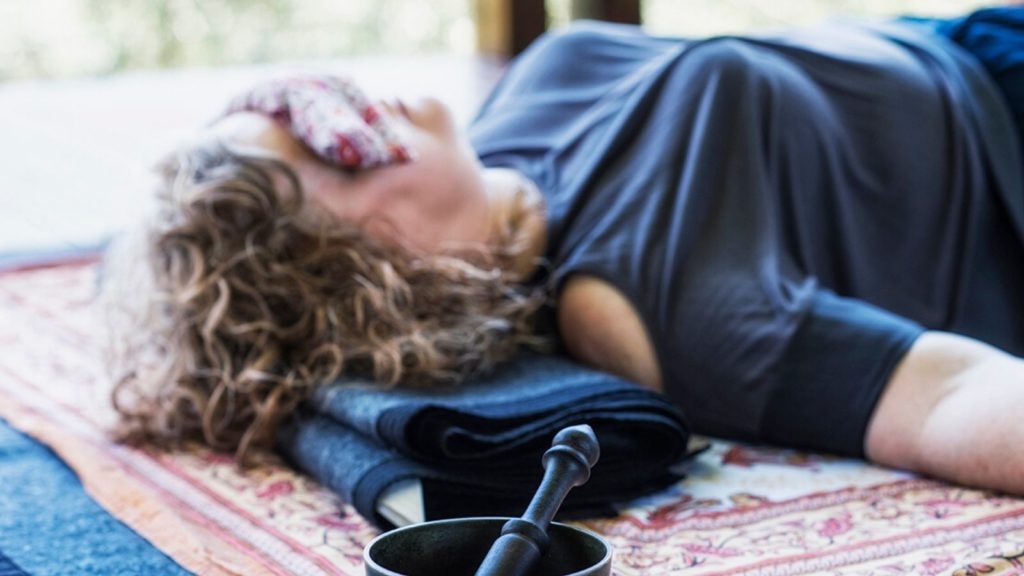True or False? The body decides when you will experience pain – the pain is only from body to brain (an afferent or ascending neural-mechanism)?
True or False? Chronic pain means that an injury hasn’t healed properly – is chronic pain always a sign of tissue damage in the body?
If you answered false to both questions, you might just be one of the lucky ones. Though many common beliefs surround the concept of pain, evidence-informed research and understanding now prove that pain is a complex phenomenon that can accurately be described as an interconnected matrix within the brain. Previously, pain pathways have been seen as direct links between the pain receptors in the body and “pain centres” in the brain. Today, we know and understand that pain pathways can be “better described in terms of concurrent ascending and descending influences—a veritable symphony of neural activity occurring simultaneously in both directions” (Dubuc, n.d.).
To explain: while ascending mechanisms are a primary initiator of this pain response, it is within the primary and secondary somatosensory cortex where the sensory dimension of a stimulus is received and recognised (from past experiences) as “pain” or nociceptive messages. Following this, it is within the anterior cingulate cortex whereby an affective dimension of pain is added to sensory input and incorporated into a level of cognitive processing that then perceives and responds.
The key here: perceives and responds.
Neurophysiologically, the perception and response to nociceptive messages are within the prefrontal cortex (the brain area responsible for cognitive processing). Once the messages have been interpreted by the primary and secondary somatosensory cortex and the anterior cingulate cortex has allocated an affect (emotion) to that pain, the prefrontal cortex “makes sense” by attributing a negative or positive association to the sensation and its location (“is this dangerous” “is this a threat”). This association then activates efferent / descending neural mechanisms, including the pain response’s endogenous opioid and endogenous cannabinoid systems; these neurochemicals then perform inhibitory pain processes within the spinal cord, thus hindering further nociceptive messages from the initial source of the sensory input. What is fascinating here, though, is not that we have the ability to interrupt the respondent symphony of neural activity by prescribing opioids and cannabinoids, but rather that we have the ability to “deceive, transform, and heal” (Vance, 2019) the mind and body by tapping into these naturally occurring chemicals through the placebo effect. More aptly speaking, it is entirely within our human capacity to tap into what we may call a Neurophysiological Pharmacy. Do not be deceived, however.
There are contraindications to pharmaceutical and illicit drug use, so too the placebo effect can have a nocebo effect.
Notably, inspired writer Erik Vance speaks eloquently on the ability of the mind and body to heal naturally “if only we believe”. With a depth of insight that only his direct immersion in Christian Science and childhood that forbade modern medicine could offer, Vance speaks about the influence of story and the removal of fear related to expectations and our belief systems surrounding the efficacy of a treatment.
As a science writer, he has learned about the “theatre of medicine” and the ability of a sense-making scenario to elicit the same neurochemical response to noxious stimuli as that of the real thing:
How does a belief become so potent that it can heal? Back to the theatre: A crucial part of an inspiring performance is sets and costumes. When improvements to symptoms are experienced, it is not just because of the physical props or what the doctors tell us about the remedy. It is the whole scene experienced: the doctors in their white coats, stethoscopes around their necks; the nurses, checkups, tests, maybe even the bad music in the hospital waiting room. Physicians sometimes call these trappings around hospitals the theatre of medicine. This stagecraft extends to many aspects of treatment and can operate on a subconscious level. Expensive placebos work better than cheap ones. Placebos in brand-name containers work better than those labelled generics. Placebo suppositories work better in France, while the English prefer to swallow their placebos. Often fake injections work better than fake pills. But, fake surgeries seem to be the most powerful of all.
Eric Vance for National Geographic
It is the inspirational play on the brain, a brain that as we know is highly susceptible and malleable, and perhaps we may even do so far as to say “gullible” and compliant, that takes a system of belief and expectation – conceivably even alongside the human connection with a trusted and respected other – and subconsciously activates our innate capacity to change and heal. Indeed, as we know, the “theatre of medicine” is not a new phenomenon. For centuries, and perhaps more recently with the increasing acceptance in the west of cultural healing techniques, we see this curious ability of the embodied brain to deceive, transform, and heal through practices of homeopathy, shamanism, and traditional rituals as through religious and spiritual therapies. Moreover, whether it be that these practices are termed as complementary medicine, alternative medicine, traditional medicine, the theatre of medicine, or whether they are termed as the “placebo effect”, there is no denying it – they work.
Is the “Placebo Effect” really the “Placebo Affect”?
As researchers begin to conceptualise and identify the neural mechanisms of pain more adeptly, the more they come to understand that the phrase “the placebo effect”, as we have come to understand, may need to be reconsidered. While the term placebo (Latin for ‘I shall please’) dates back to the 14th century, the specific medical use of “a” placebo was not commonplace until the early 19th century where is was defined as “an epithet given to any medicine adapted more to please than to benefit the patient” (Quincy, 1811 cited in Craen et al., 1999). With this in mind, it was only in the 1930s when the placebo effect was realised and named as such. There has been considerable debate over the use of term ‘placebo’ and the placebo effect in the past two decades. This debate stems somewhat over the inability to attribute an effect to an inert object (Mosely, n.d.) and the medical knowledge that when the placebo effect is “in action”, there are many neural mechanisms activated, including the circuits involved in thought, emotion, expectation, reward, motivation, and of course resultant behaviour (Insight, 2016). Nonetheless, and as above conceptualised, the results of these activated circuits in the prefrontal cortex have the same physical results as that of pharmaceutical opioids such as morphine – the brain activates a neurochemical response to produce interneurons within the spinal cord, which in turn release endogenous opioids that inhibit the ongoing symphony of neural activity that perpetuates the original pain response.
Thus, is what we see an effect or an affect? Is it the result of a neurochemical change, or is it rather an instigator of a neurochemical change? While ultimately the semantics may lie in the basis of the English language (effect = noun; affect = verb), it is the perception of a positive outcome, a secure belief formed in an underlying trust of the medical system, the data that supports and propagates the positive outcome, and the person administering or offering the solution, that indeed forms the placebo effect/affect.
Correspondingly, as Dr. Lorimer Moseley and Erik Vance articulate, though the placebo itself is an inert object that cannot actually have an effect, and while many positive outcomes have been reported, ultimately what this research and understanding are telling us is that the power of the placebo is a complex, paradoxical form of mysterianism. Just as there can be a positive physical outcome to a safe, trusted, optimistically primed expectation and belief, so too there can be a negative outcome to a feared, distrusted, and negatively charged expectation or belief. The brain in fear cannot produce the neurochemicals required to activate the endogenous opioid or cannabinoid systems required to inhibit the nociceptive messages that instigated the pain response. Indeed, there are many dangers of a belief system that does not understand our bodies limitations of healing (Vance, 2019). More succinctly speaking, there are limitations to what our brains and bodies can and cannot do and accessing the placebo effect is about sophisticated intelligence, not blind belief; it is a method of transformation by keeping one foot in the biomedical field and one foot in the complementary medicine field.
The Yoga Effect
With one foot rooted in the biomedical field, and one foot rooted in the ancient wisdom of the Tradition of Ayurveda, Yoga, and Meditation, there is a fascinating and most curious deduction to be made: Just as many traditions over the ages have done, so too we know (and is continually being evidenced) that practices of yoga and meditation using both belief and evidence-informed practice to produce an effect on well-being that helps many to find that connection, hope, healing and the belief in a better collective – and effect that is akin to the placebo effect; a belief and trust that as humans we have the innate capacity to change and to heal – biopsychosocially.
However, it must be reiterated:
You can endanger your life very easily by taking a placebo when you have a serious disease and don’t seek an active treatment.
Vance, 2019
When using complementary medicine to your advantage, the overarching advice is this: throw yourself in with the full power of belief, but always leave one foot out.
References and Additional Resources
On Being: Erik Vance – The Drugs Inside Your Head
Wired to run: exercise-induced endocannabinoid signaling in humans and cursorial
mammals with implications for the ʻrunnerʼs highʼ
National Geographic: Unlocking the Healing Power of You
ABC All in the Mind: Meditation for the collective good
Revised Neurophysiology of Pain Questionnaire
The Brain from Top to Bottom: How Drugs Effect the Brain
The Brain from Top to Bottom: The neuromatrix of Pain – Beginner
The Brain from Top to Bottom: The neuromatrix of Pain – Intermediate
The Brain from Top to Bottom: The neuromatrix of Pain – Advanced
How does the opioid system control pain, reward and addictive behavior?
Placebos and placebo effects in medicine:
historical overview
No brain, no pain: it is in the mind, so test results can make it worse
Ngangkari healers: 60,000 years of traditional Aboriginal methods make headway in medical clinic
If you would like to contact Celia to learn more about the yoga teacher training journey, please do visit our Yoga Teacher Training Page or find us on Facebook or Instagram or contact Celia directly.


